- Hellenistic Judaism
- Jesus is copied from ancient pagan gods
- religious syncretism
- Paul’s usage of the mystery language
- Justin Martyr’s claim
- Jews don’t like pagans (no syncretism)
- Paul’s resistance to paganism
- other resurrections are only metaphors
- post hoc ergo propter hoc fallacy
- mystery cults are from the 2nd century+
- doesn’t fit Jewish culture to assimilate pagan deities
- connections are superficial
- false gods were ‘invented’ to serve the needs of local tribes
- Paul’s theology comes from Judaism
Mystery religions
There were several mystery religions in the ancient world: Cybele, Attis, Dionysus, Adonis, Aphrodite, Tammuz, Inanna, Isis, Osiris, etc.
What we know about Jesus (virgin birth, miracles, exorcism, 12 disciples, last supper, crucifixion, resurrection, etc) resembles a lot to the Hellenistic religion’s deities. Could it be that the cultural influence of Greece might shaped the identity of Jesus?
First, they were against paganism. Second, it was clearly derived from Judaism. The connections are very clear. And so if there is any potential borrowing from paganism, Christianity remains unique.
Why mythicism don’t work
Fallacy
The first mistake when drawing closed parallels between the accounts of Jesus with the Greco-Roman legends, it’s the “post hoc ergo propter hoc fallacy“.
Just because A existed before B, doesn’t necessarily mean that B is caused by A. B could be caused by something else.
For example: Morgan Robertson‘s novel “Futility” (1898), talking about a gigantic ship, the “Titan”. It was considered unsinkable, but it hits an iceberg and sink. There were very few lifeboats, so the majority of the people perished. 15 years later, the exact same story really happened to the Titanic. Was it a coincidence?
In the same way, just because myths exists before the Gospels, doesn’t mean that the Christianity was copied over them. In fact, it derived from Judaism.
Hellenistic Judaism
Richard Carrier claims that Christianity is a fabricated Greek version of Judaism.
During the Hellenistic Age (323 BCE – 31 BCE), the whole Mediterranean was heavily influenced by Greek culture, including Palestine, due to the conquests of Alexander the Great. After that, the Roman Empire took control of the regions.
Many gods were syncretized and shared between the different cultures (ex: Serapis, Hermanubis, etc.).
- Zeus became Jupiter
- Aphrodite became Venus
- Poseidon became Neptune
In general, pagans believed that the forces of nature are divine (ex: the sun was a god). And since all human beings lives on the same planet (ex: we have the same sun, same moon, same earth, etc), it makes it easy for people of different polytheistic religions to combine their gods, a process we called “syncretism”.
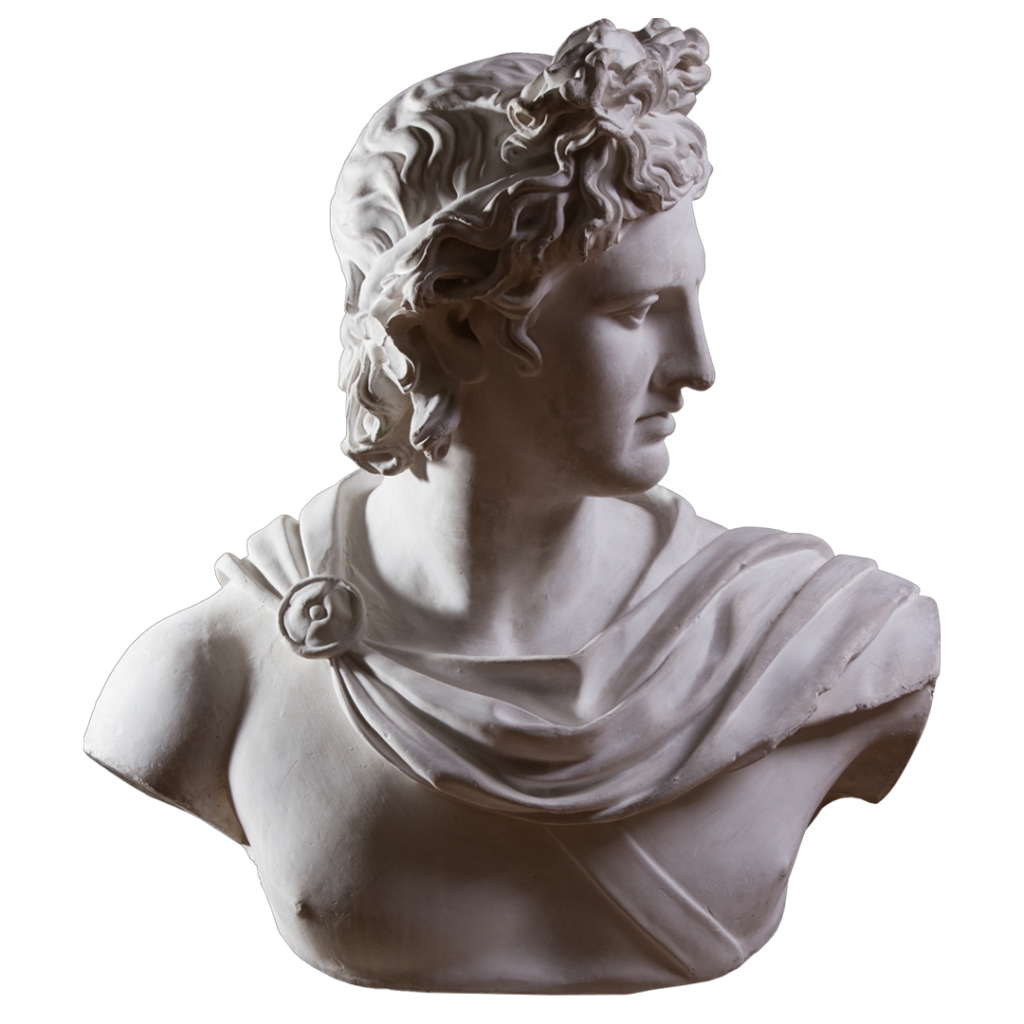
- Greek language
- Proximity of Gentile cities to Galilee
- Hellenistic cities within Galilee
- Pagan Gentile population within Galilee
- Location & topography of Lower Galilee
- Foreign rule in Galilee
- Tension between Galilee and Judea
- Magic & astrology
Could paganism influenced Judaism?
The covenant relationship between God and Israel is like a husband and wife1. The Jews are forbidden to worship any other gods2, idolatry was like cheating on a spouse. Their laws was to make them holy (set apart from other nations). Israelite recite 2 times a day the Shema prayer (Deut 6:4). Jewish history tells us that they were known to smashing down pagan idols (Moses, Elijah, Joshua, etc.). Compared to pagan religions, Judaism is a strictly exclusive.
Of course, it happened that Israel went into idolatry when they are not even supposed to (Ex 20:4, Deut 5:8) (Apis, Baal, Astarte, etc.)3. More than 3,000+ unfaithful Jews were slaughter for that (Ex 32:28).
Just to give you an idea, between the Maccabees revolt (168 BCE) and the fall of Jerusalem (70 CE), we find no trace of Jewish Palestine assimilating pagan beliefs and practices4.
In the Greco-Roman world, only the Jews refused to honor gods, shrines, and cults other than their own5.
Herod refused to build pagan temples or gymnasiums in Jewish areas, and to build an amphitheater in Jerusalem6.
Indigenous cultures are largely intact and unaffected by Greek religious assimilation7.
In other word, Hellenism may affect their conquered land’s culture, but not their religion.
Jewish origins
Origins of the Jesus movement
Oral transmission went into three stages: Jerusalem (33-35 CE), Judea & Samaria (35-48 CE), Gentile (48-62 CE).
Many of Jesus’ features resemble a lot to those famous Greco-Roman myths & legends, such as the virgin birth, miracles, date of birth, resurrection, etc.
The earliest Christology (miracles of Jesus, his resurrection, divinity, and so forth) came from a hostile environment which would deny them in the 30s. It’s not influenced by Gentile ideas from the 50s.
Even in 49 CE, the Church was still very Jewish due to their primary concern about the question of how to get saved (Council of Jerusalem)15, rather than Jesus was a copy from pagan myth.
The story of Jesus was told from the inside out, not the opposite.
What we know about Jesus has already been shaped in the Palestinian milieu: divinity, resurrection, miracles.
Placeholder
Could the first Christians make up a resurrection story as a polemic against pagan culture? Like the story of Genesis against the Enuma Elish, Epic of Gilgamesh, etc.
This is less likely the case:
- Jews themselves weren’t convince of a risen man (it was supposed to happen at the end of the time, not in the middle of history)
- Greeks from Athens and Corinth were unfamiliar with the idea of a bodily resurrection.
- the Church started with Jews from the Palestine
- Jesus is a Jewish Messianic figure
- the Church only had contact with Gentiles in the 50s AD
- many of the claims about Jesus came from the early Church of the 30s-40s AD
- Jews are impatient to praise their Messiah who will deliver them from their enemies (get rid of pagan Rome)
- early Church was still very Jewish in 49 AD (debate about circumcision in Jerusalem)
- absence of a Council to debate whatever Jesus existed or not
Since the Church have to wait until the 50s AD to be established on Gentile grounds, anything that dates earlier is less suspicious.
- creeds & hymns
- Aramaic in the 30s-40s AD
- Paul & the Gospel authors
- constant reference to the Old Testament
Since the creeds & hymns are dated so early, the core doctrines of Christianity is unaffected.
Independent from Greek myths
Mark (first Gospel) is very Jewish: it refers to Jewish sources over seventy times (with emphasis on Isaiah) and never once does it explicitly refer to a Greco-Roman source16.
If there are any Greco-Roman similarities at all, Jesus’ features are completely derived from Judaism as He is the embodiment of Yahweh. The Greek word for Messiah is “Christos”, where we got “Jesus Christ”. Christians are in fact, people who believed that Jesus is the promised Messiah, awaited by the Jews.
| Gospel | Old Testament |
| Matthew 1 | Genesis 5 |
| Mark | Isaiah is fulfilled, Elijah is back |
| Luke | 1 Samuel 1-2 |
| John 1 | Genesis 1 |
Mark’s prologue (1:1) contains the word “gospel” (evangelion) used by Isaiah 40 and 52, referring to the end of exile, a “new exodus”, and the return of YHWH himself to rescue his people17.
The chief priests were furious against Christians because they thought they infiltrated pagan ideas into Judaism.
Paul
Among the Jews, Paul was a zealous Pharisees20, the most strict Jewish sects who keeps the Laws faithfully. They are the most intolerant against the idea of religious syncretism.
Martin Hengel argues that Paul only persecuted the ‘Hellenists’ Christians in Jerusalem, not the ‘Hebrews’ ones21.
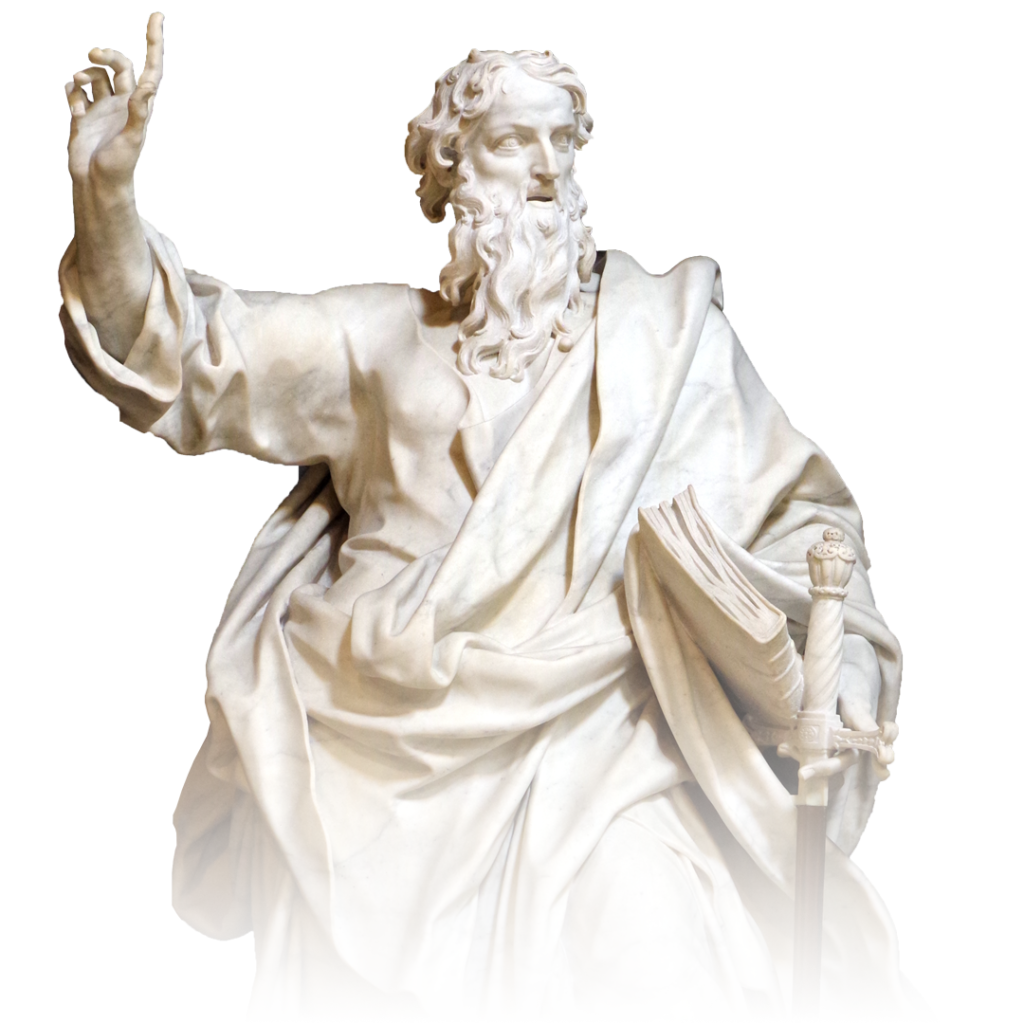
Creative Commons Attribution-Share Alike 4.0 International
Image by “Baba-patrimoine.fr” (Wikipedia). Image was cut for purpose of aestheticism.
- hates the pagan gods (responsible for people’s sin22)
- allowed people to stone infidel Jews
(Acts 7:58, 26:10) - debates with Hellenists
(Acts 9:29) - stayed a monotheist after his conversion
(1 Cor 8:4-6) - wanted to destroy (violently) the Church
(Gal 1:13) - his zeal is comparable to Phinehas
(Num 25:1-15)23 - persecuted the Christians thinking they were blasphemers against God by worshiping a man called Jesus
(Acts 8:3, Phil 3:6)
Greek mythology and Christianity
The Gospel authors
Peter told Cornelius that it was sinful for a Jew to associate or visit a Gentile24.
Who were the first Christian authors who wrote the New Testament? Faithful Jews: Paul, Matthew, Mark, Luke, John, Peter, James and Jude. They constantly refers back to the Old Testament: Jesus is the new Adam25, the new Moses, the new David, etc. and God (Yahweh) himself.
Contemporaries of Jesus, the first disciples were pious Jews in a constant debate against each other over the Jewish Laws (circumcision26, temple purification, the meal-offering, etc.). We can’t imagine the Apostles to invent a Jewish Messiah based on pagan myth as the foundation of their own belief.
Jesus: a mythical hero?
In ancient myths, stories typically shared the same pattern, which we call the hero’s journey or the ‘monomyth’ (discovered by Joseph Campbell).
Could the story of Jesus be similar to those famous Greek heroes? Like Perseus, Achilles, Jason, Odysseus, Prometheus, etc., following a set pattern (ex: Joseph Campbell’s hero’s journey)?
If that’s the case, then scholars would have to include historical characters in the same category27:
- Abraham Lincoln
- Winston Churchill
- Napoleon
- President Kennedy
- William Wallace
Moreover, Jesus is never depicted as a military warrior, a common theme on those mythical pattern. On the contrary, He was a teacher, servant and miracle-worker.
The Jesus parallels
Mystery cults

Greco-Roman mystery religions are often compared to Christianity.
Mystery cults are secretive. People don’t usually talk about it (it’s the reason why we don’t have a lot of evidence available). In order to know more about their ideas, one must join that sect. There’s no evidence that the first Christians ever joined one of them. Most of the practitioners came for emotional fulfillment.
Christianity on the other hand, is the total opposite. Jesus commands the disciple to preach the Good News to everybody, so they can get saved. The Apostles were highly concerned with rigid doctrines.
A mistake
Even if there are a lot of similarity between Greco-Roman religion and Christianity, at the end of the day, there isn’t no references between God and Jesus that is absent. The claims surrounding Jesus is based on the Hebrew Bible, not from Hellenism.
Jesus’ miracles & resurrection are unique compare to other religions30.
“Anyone who thinks that Jesus was modeled on such deities needs to cite some evidence—any evidence at all—that Jews in Palestine at the alleged time of Jesus’s life were influenced by anyone who held such views.” 35
Bart D. Ehrman
But even if any of them pre-date Christianity, all the primitive Christian theology (baptism36, Eucharist37, virgin birth38, resurrection39, etc.) are still derived from Judaism, independent from paganism. Paul quotes to the Old Testament around 268 times. The Gospels & Church Fathers quote from the Old Testament (typology). Baptism didn’t come from Mithras, the Eucharist didn’t come from Dionysus.
Jesus’ identity is rooted in Judaism, independently from Greek or pagan culture
Why Christianity is unique
While some rituals are similar to pagan practices (it’s all religious after all), the Christians ones are still unique.
Baptism
…
Even if baptism looks similar to the Mithras introduction rite, it still comes from the Old Testament.
Eucharist
References to the Eucharist is all over the Old Testament.
Even if the Eucharist is compared to Dionysus, pagans found it repugnant to consume Jesus’ body as cannibalism.
Virgin birth
…
Miracles
…
The dying-rising gods
Symbolism of the pagan gods
One mistake people make about the parallels, is that they treat all the stories as if they were all the same. But frankly, they are quite diverse: some gods rise but didn’t die, while others die but didn’t rise. They need to be analyzed individually40.
If any pagan religion had such stories of divine ‘resurrections’, they were only metaphors (speaking about seasonal & day cycles, weather, harvest, reproduction, and fertility)4142. Why? Because the polytheistic gods were associated with forces of nature (ex: the sun was a deity, the sky as well, the moon as well, etc.). And it’s quite easy to invent myths to explain why nature acts the way it does.
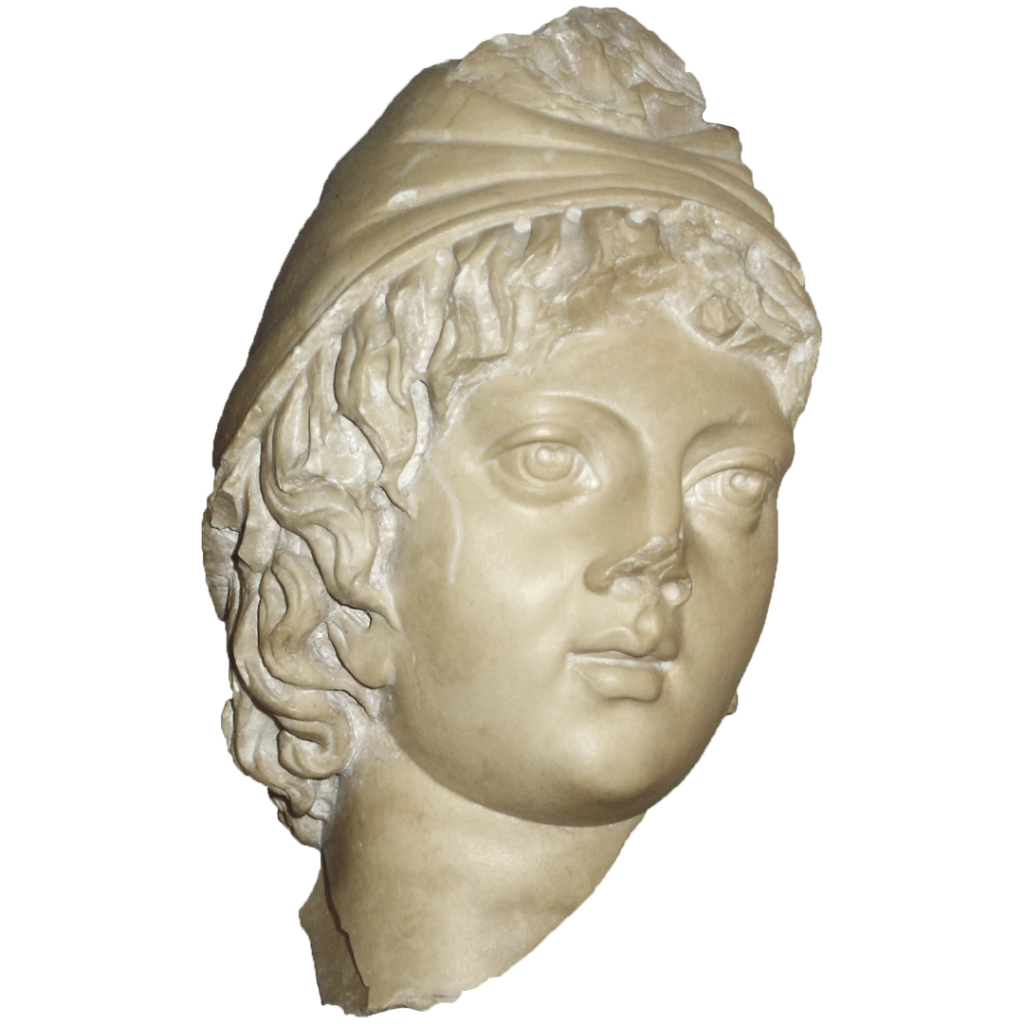
Nut (Egyptian goddess of the sky) gives birth to Ra (Egyptian god of the sun) every morning and swallows him back at night (and so forth) to explain the day/night cycle in Egypt.
Attis (Phrygian god) is a vegetation deity who ‘die’ in winter and ‘rise’ back in spring repetitively (early 3rd century CE or later).
Isis & Osiris (Egypt) pre-date Christianity, but there’s no resurrection. Osiris stayed in the underworld43.
In Hinduism, re-incarnation is to be ‘reborn’ in another mortal body that wasn’t ours, die again, reborn again, etc. (continuous cycle).
Pagans celebrated festivities as the ‘return of their gods’, following a specific date of the calendar. Easter on the other hand, follows the date of the Passover feast, which change dates every year according to the moon. In each liturgy, Jesus isn’t re-sacrificed or reborn again. It’s done one time in history.
Afterlife in Christianity
Jesus’ bodily resurrection is extremely unique.
Roman emperors (Julius Cesar or Augustus) and Greek heroes (Alexander the Great) were ‘divinized’ (apotheosis) to join the ranks of the gods. They enjoy being in the pantheon, why should they come back to his miserable earthly life?
None of them is even closed to Christianity. Jesus’ resurrection is a one-time event in history, ‘reborn’ in the same body, but in the state of glory (immortality). It was a revolutionary new idea (the Greeks found that idea very strange).
The biggest mistake would be to associate Jesus with those ‘vegetation gods’. He is Yahweh, the Creator of the universe, in the flesh (Jn 1:1-14). Heaven & earth are submitted to Him. The sun, the moon, the sky, they are strictly creations, not the Creator.
“The category of dying and rising gods, once a major topic of scholarly investigation, must now be understood to be have been largely a misnomer based on imaginative reconstructions and exceeding late or highly ambiguous texts.”44
Jonathan Z. Smith
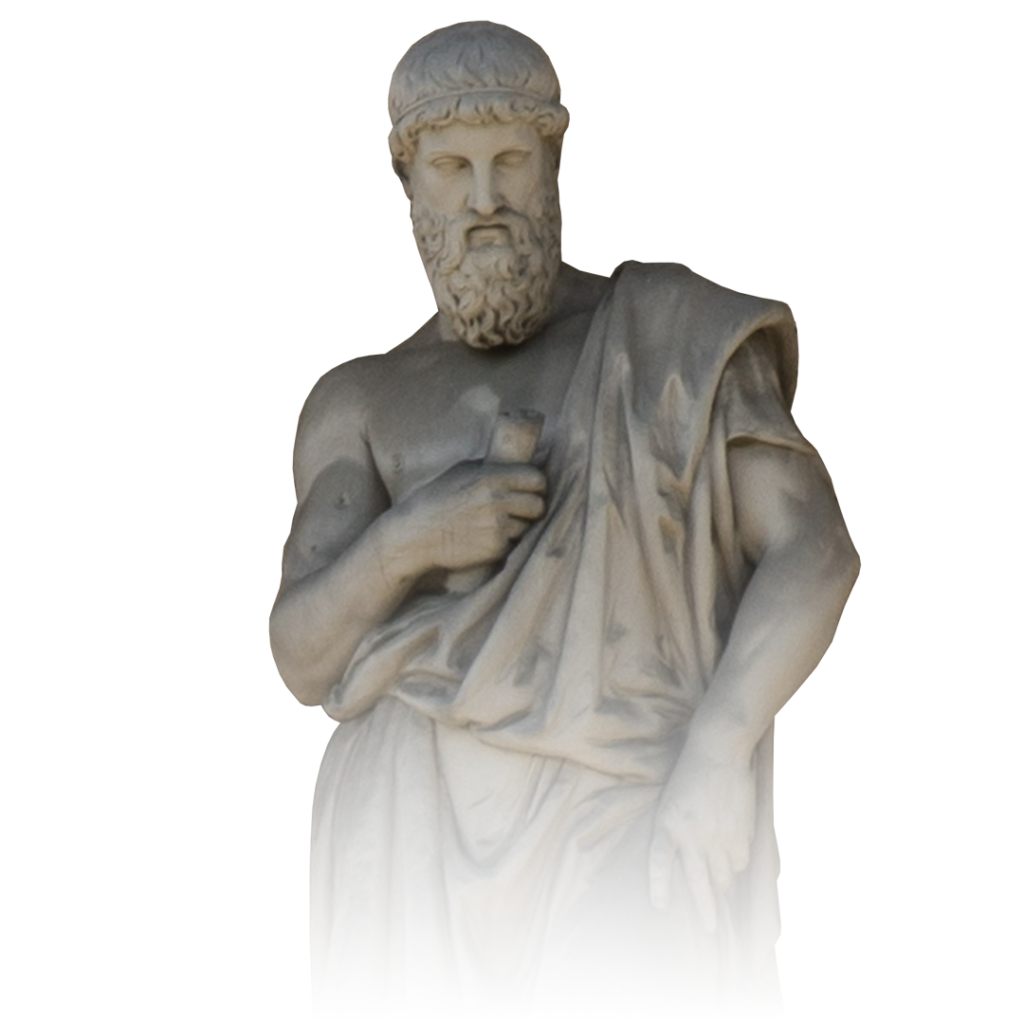
For Plato (427-347 BCE), the human body was a ‘prison’, and the soul desire to be liberated from this corrupted material world50. They don’t want to come back in their earthly human body, they want to escape it. Hades was a more pleasing place to stay51. You don’t rise again, you become immortal after death.
Resurrection of the flesh is a Jewish hope, not a Greek one.
Paul
Plato’s influence in the Greek culture was apparent at the time of Paul.
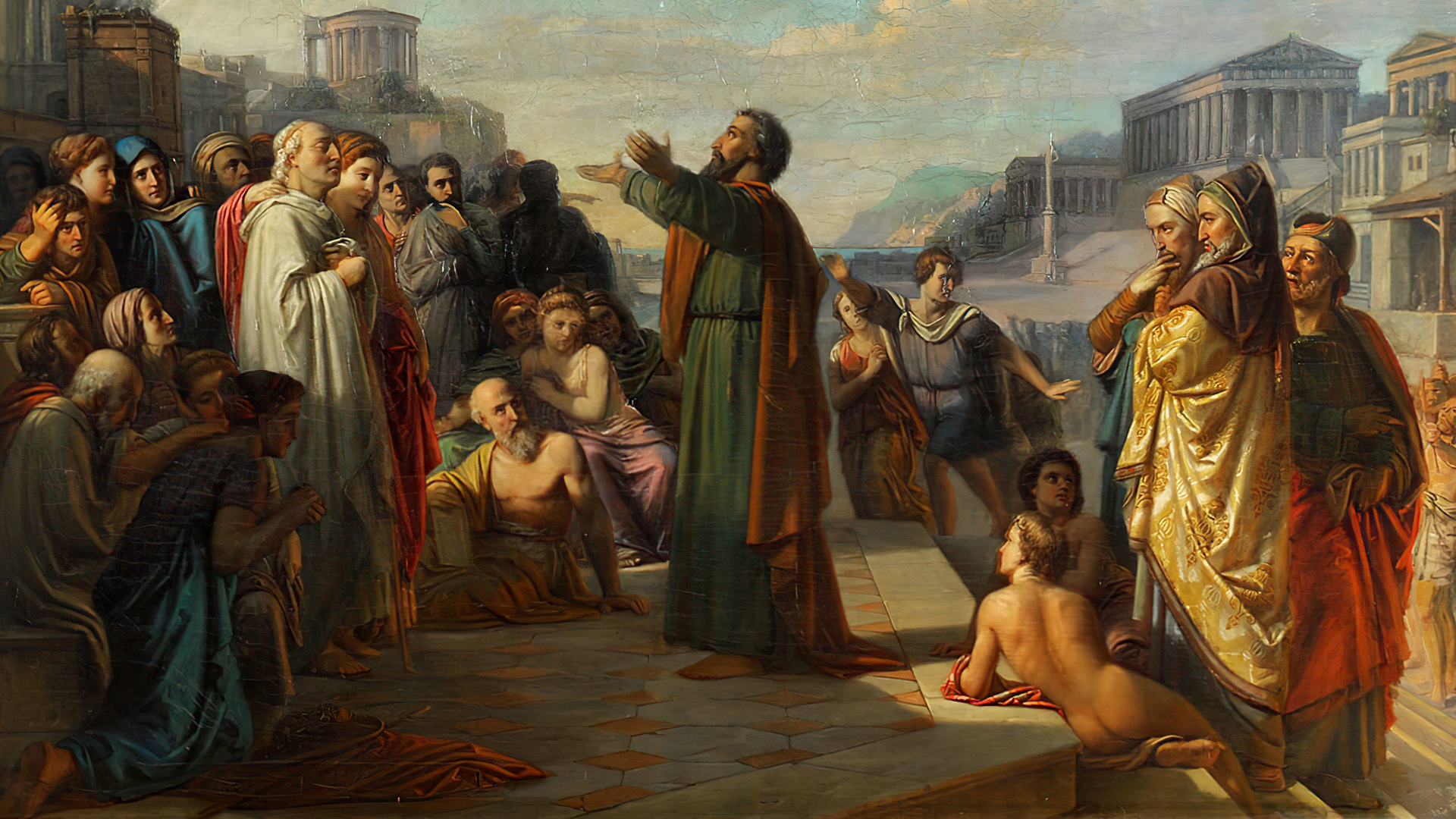
- in Athens: the Greeks rejected Paul’s idea
(Acts 17:16-32) - in Corinth: some Christians didn’t believed in the resurrection of the dead
(1 Cor 15:12)
In the Judaeo-Christianity faith, matter is good: bodily risen Jesus, God took a body, and emphasis on the sacraments (baptism, Eucharist, etc.) for salvation. It’s the opposite: there is no borrowing here.
The end goal of Christianity is the redemption of the flesh.
And even if any of the Greeks had stories of dying-rising gods, Jesus’ resurrection is still uniquely a Jewish idea.
Paul & John condemn the docetists as false teachers.
“There is, as far as I am aware, no prima facie evidence that the death and resurrection of Jesus is a mythological construct, drawing on myths and rites of the dying and rising gods of the surrounding world. While studied with profit against the background of Jewish resurrection belief, the faith in the death and resurrection of Jesus retains its unique character in the history of religions.” 54
T.N.D. Mettinger
Recommended books
- Bart D. Ehrman – “Did Jesus exist? The historical argument for Jesus of Nazareth”
- Paul Rhodes Eddy & Gregory A. Boyd – “The Jesus Legend: a case for the historical reliability of the Synoptic Jesus tradition”
- T.N.D. Mettinger – “Riddle of Resurrection: Dying and Rising Gods in the Ancient Near East”
- Martin Hengel – “The Son of God: the Origin of Christology and the History of Jewish Hellenistic Religion”
- Jer 31:32, Ezek 16:8, Hos 2:18-20
- Ex 20:2-6, 34:14, Deut 5:7, 32:16
- Judges 10:6, 1 Kgs 19:18, Ezek 8:14
- Martin Hengel, “Judaism and Hellenism revisited”, (Scm Pr, 2012), 24
- Paul Rhodes Eddy & Gregory A. Boyd, “The Jesus Legend: a case for the historical reliability of the Synoptic Jesus tradition”, (BakerAcademic, 2007), 111
- E.P. Sanders, “Jesus’ Galilee,” in Fair Play: Diversity and Conflict in Early Christnaity, Essays in Honours of Heikki Raisanen, ed I. Dunderberg, C. Tuckett, and K. Syreeni (Boston: Brill, 2002), 21
- T. Rajak, “The Hasmoneans and the Uses of Hellenism,” in A Tribute to Geza Vermes: Essays on Jewish and Christian Litterature and History, ed. P.R. Davies and R.T. White (Sheffield: Sheffield Academic Press, 1990), 265
- Rodney Stark, “The Rise of Christianity: How the Obscure, Marginal Jesus Movement Became the Dominant Religious Force in the Western World in a Few Centuries”, (Princeton: Princeton University Press, 1996), 58
- N.T. Wright and Michael F. Bird, “The New Testament In Its World: An Introduction To The History , Literature, And Theology Of The First Christians”, (London: Zondervan Academic, 2019), 166
- Gerd Theissen, “The Gospels in Context: Social and Political History in the Synoptic Tradition”, (Minneapolis: Fortress Press, 1991), 289
- Joseph A. Fitzmyer, “A Christological Catechism: New Testament Answers” (new revised and expanded edition), (New York: Paulist Press, 1991), 92
- Mk 14:70, Acts 1:11, 2:7
- Gerd Theissen, “Sociology of Early Palestinian Christianity” translated by John Bowden, (Philadelphia: Fortress Press, 1989), 47
- Martin Hengel, “Between Jesus and Paul: studies in the earliest history of Christianity”, (Eugene, OR: Wipf and Stock, 1983), 7
- Acts 15
- Rikk Watts, “Mark” in Commentary on the New Testament Use of the Old Testament, ed. G. K. Beale and D.A. Carson (Grand Rapids: Baker Academic, 2007)
- N.T. Wright and Michael F. Bird, “The New Testament In It’s World: An Introduction To The History, Literature, And Theology Of The First Christians”, (Grand Rapids, MI: Zondervan Academic, 2019), 562
- Lk 24:31-32, 37, 45-47
- Dan 7:13-14
- Acts 23:6, 26:5, Phil 3:5
- Martin Hengel, “Acts and the History of Earliest Christianity”, (Philadelphia: Fortress Press, 1985), 74
- Rom 1:18-32
- Larry W. Hurtado, “Destroyer of the gods: early Christian distintiveness in the Roman world”, (Baylor University Press, 2016), 24
- Acts 10:28
- Rom 5:19, 1 Cor 15:20-23; 45-49
- Acts 15
- Paul Rhodes Eddy & Gregory A. Boyd, “The Jesus Legend: a case for the historical reliability of the Synoptic Jesus tradition”, (Baker Academic, 2007), 149
- 1 Cor 15:51, Rom 11:25; 16:25, Col 1:26-27
- Raymond E. Brown, “Introduction to the New Testament”, (New York, NY: Doubleday, 1997), 86
- Edwin Yamauchi, “Jesus, Zoroaster, Buddha, Socrates, Mohammad” (revised edition), (Downers Grove, 1972), 4-7, 18, 38, 41
- Martin Hengel, “The Son of God: the origin of Christology and the history of Jewish Hellenistic religion” (translated by J. Bowden (Philadelphia: Fortress, 1976), 27
- Gunter Wagner, “Pauline Baptism and the Pagan Mysteries”, (Edinburgh: Oliver and Boyd, 1967), 197-201
- Justin Martyr, “First Apology”, 1, 21-22
- Gary R. Habermas & Michael R. Licona, “The Case for the Resurrection of Jesus”, (Grand Rapids: Kregel Publications, 2004), 90 and 296
- Bart D. Ehrman, “Did Jesus Exist?: The Historical Argument for Jesus of Nazareth”, (New York:HarperCollins, 2012), 338
- 1 Pet 3:20
- Jn 6:32
- Isaiah 7:14/Mt 1:22-23
- Dan 12:2, Is 26:19
- N.T. Wright and Michael F. Bird, “The New Testament In Its World: An Introduction To The History, Literature, And Theology Of The First Christians”, (Grand Rapids, MI: ZonderVan, 2019), 275
- T.N.D. Mettinger, “Riddle of Resurrection: Dying and Rising Gods in the Ancient Near East, Coniectanea Biblica, Old Testament, 50 (Coronet Books, 2001), 219
- N.T. Wright, “The Resurrection of the Son of God”, (Minneapolis: Fortress Press, 2003), 80
- Frankfort, H. 1962, “Kingship and the gods: A study of ancient Near Eastern religion as the integration of society and nature. (1948), Chicago
- J.Z. Smith, “Dying and Rising Gods”, 4:521
- N.T. Wright, “The Resurrection of the Son of God”, (Minneapolis: Fortress Press, 2003), 32-35
- N.T. Wright, “The Resurrection of the Son of God”, (Minneapolis:Fortress Press, 2003), 43
- Aeschylus, “Eumenides”, 647f
- N.T. Wright, “The Resurrection of the Son of God”, (Minneapolis: Fortress Press, 2003), 67
- N.T. Wright and Michael F. Bird, “The New Testament In Its World: An Introduction To The History , Literature, And Theology Of The First Christians”, (London: Zondervan Academic, 2019), 273
- Plato, “Phaedo”
- N.T. Wright and Michael F. Bird, “The New Testament In Its World: An Introduction To The History , Literature, And Theology Of The First Christians”, (London: Zondervan Academic, 2019), 269
- Isa 53:4-11, Hosea 6:1-2, 1 Cor 15:4, Lk 24:44-46, Jn 20:9, Acts 13:32-37
- Rom 4:24, 6:4, 9, 1 Cor 15:15, Acts 10:40, 13:30
- T.N.D. Mettinger, “Riddle of Resurrection: Dying and Rising Gods in the Ancient Near East, Coniectanea Biblica, Old Testament, 50 (Coronet Books, 2001), 221”